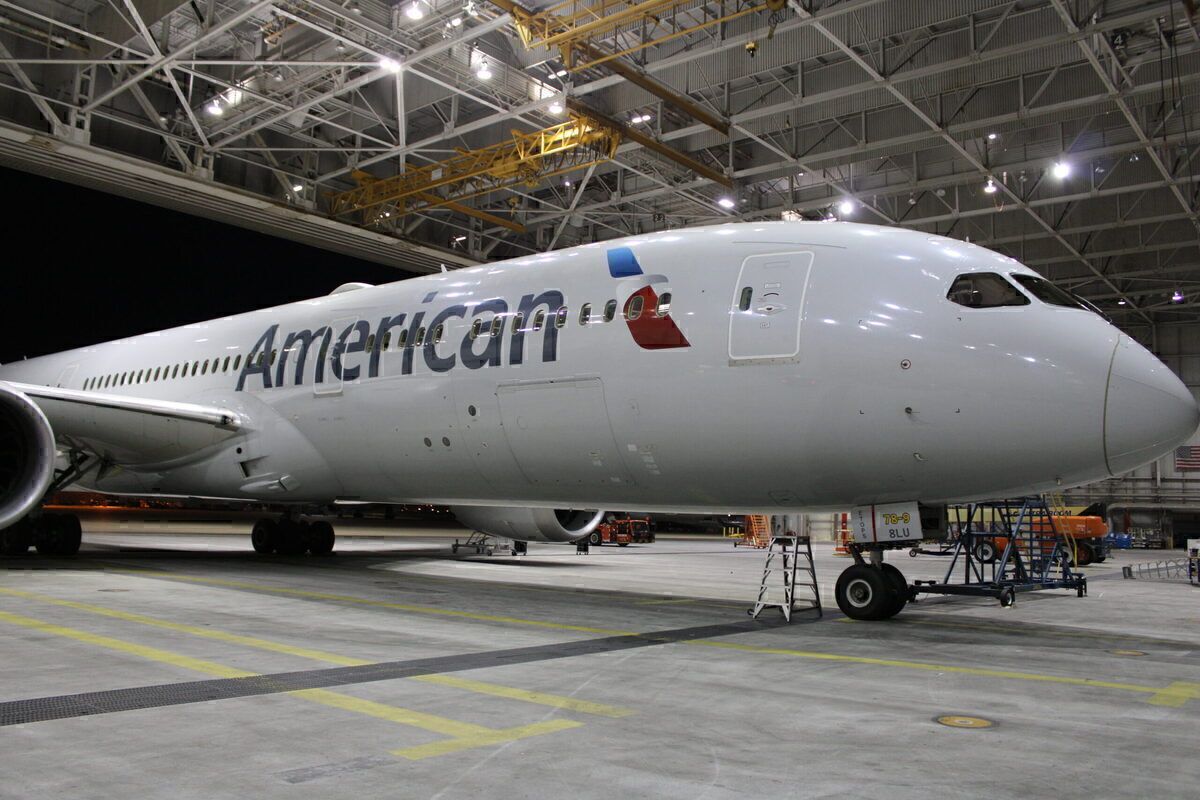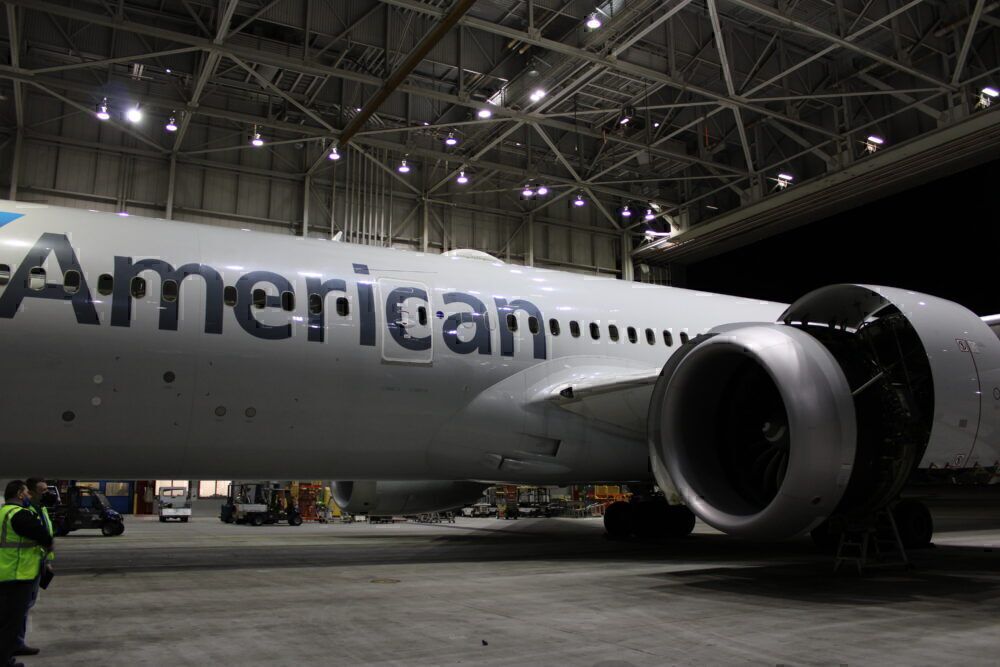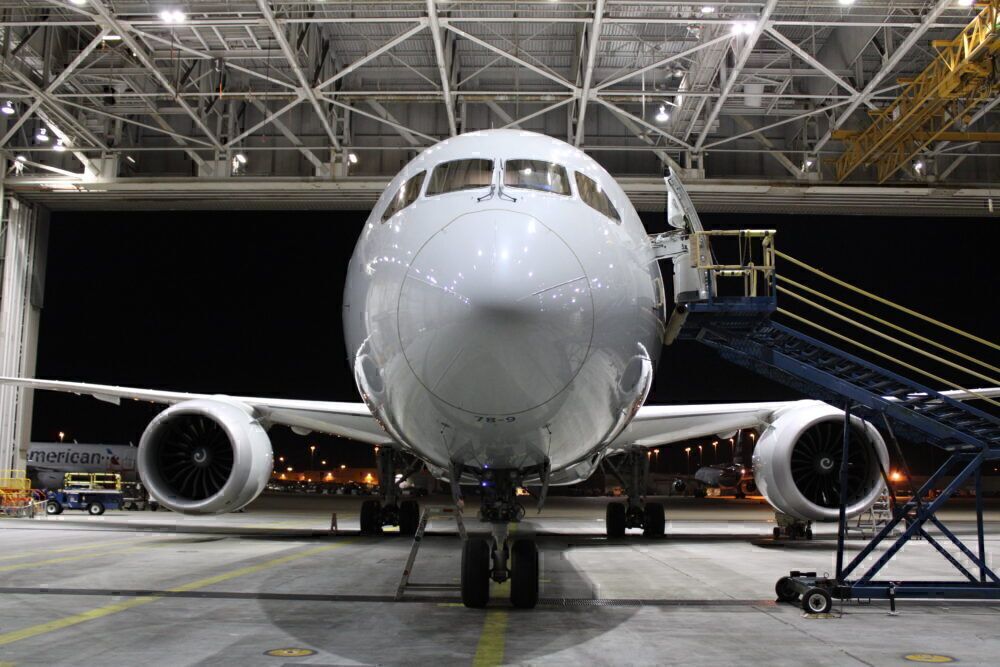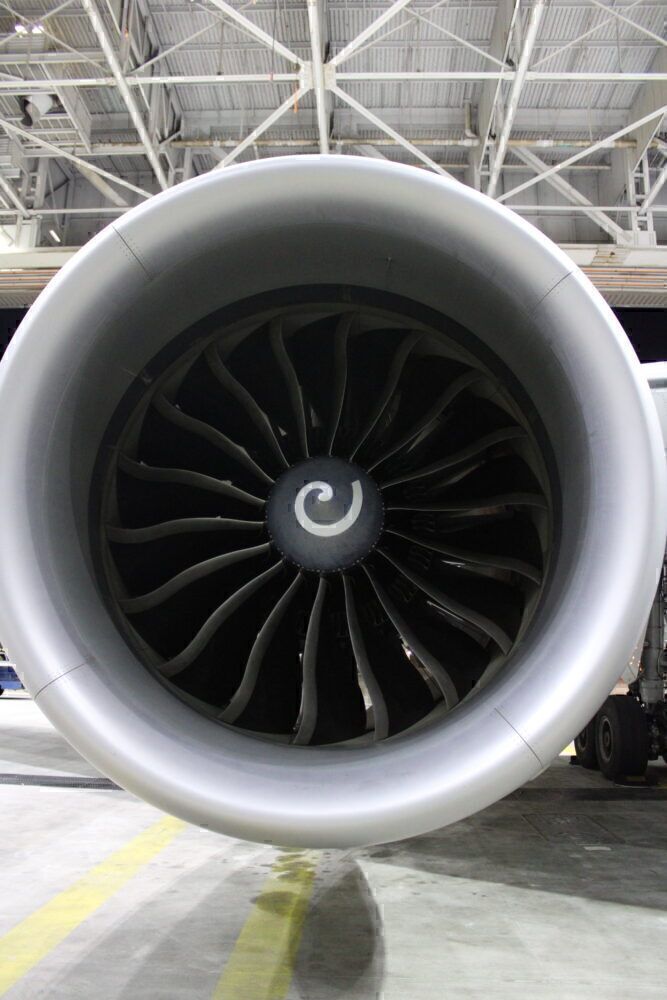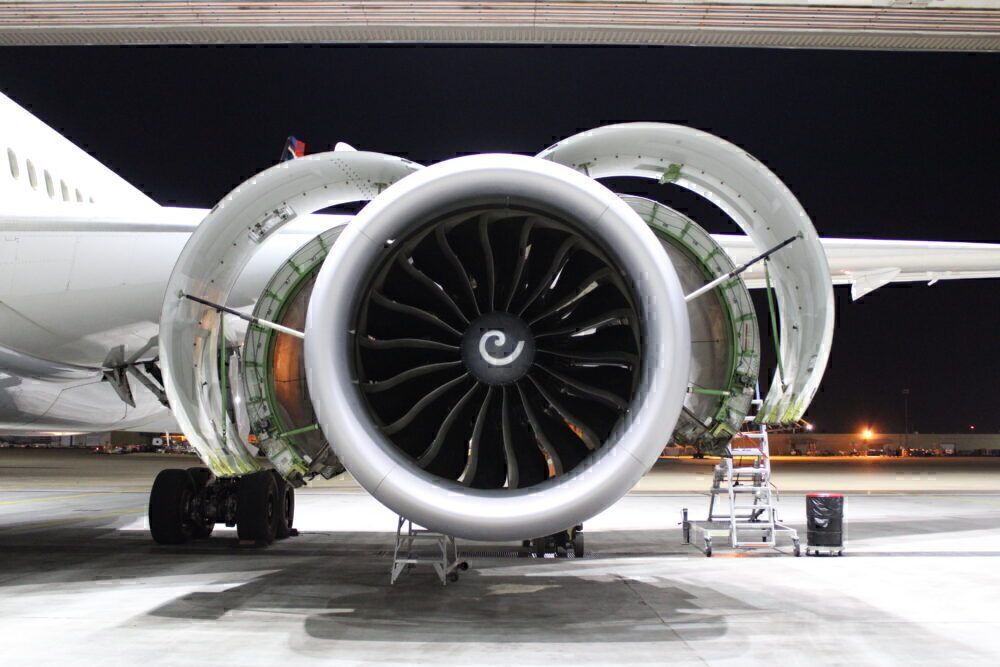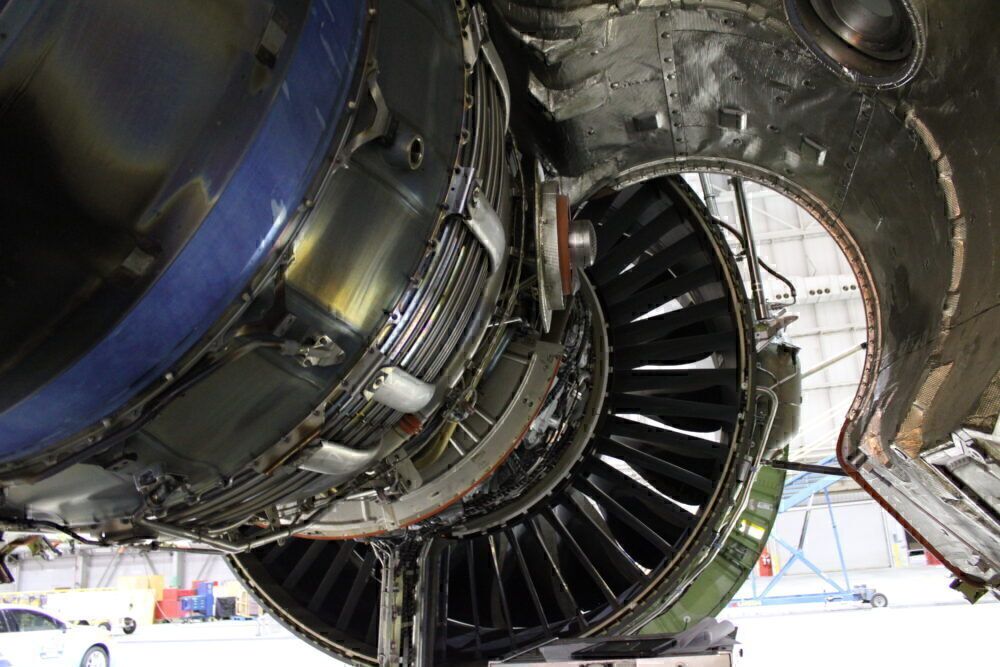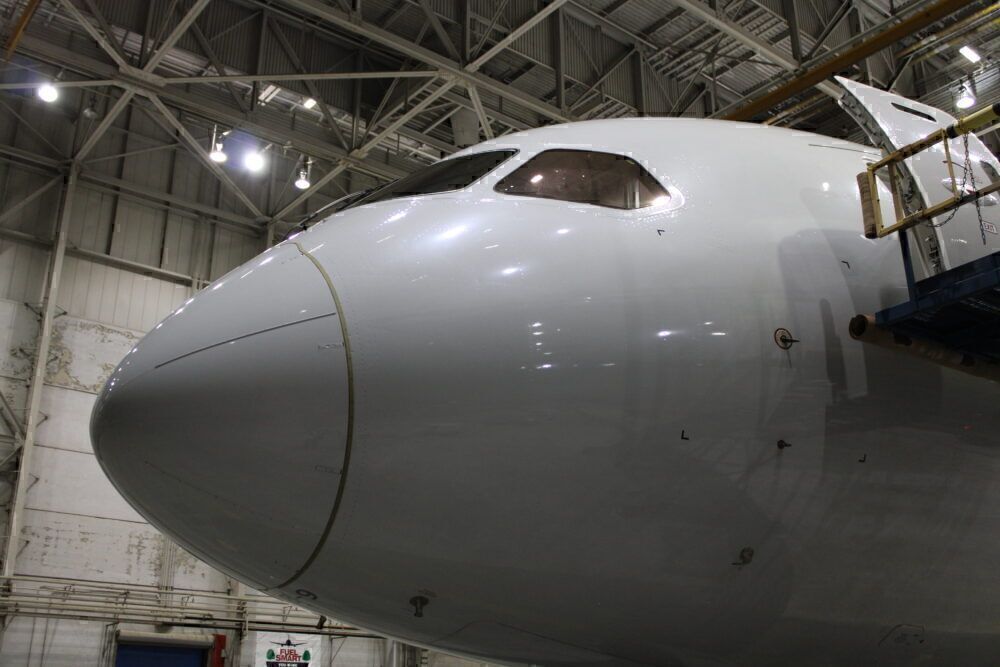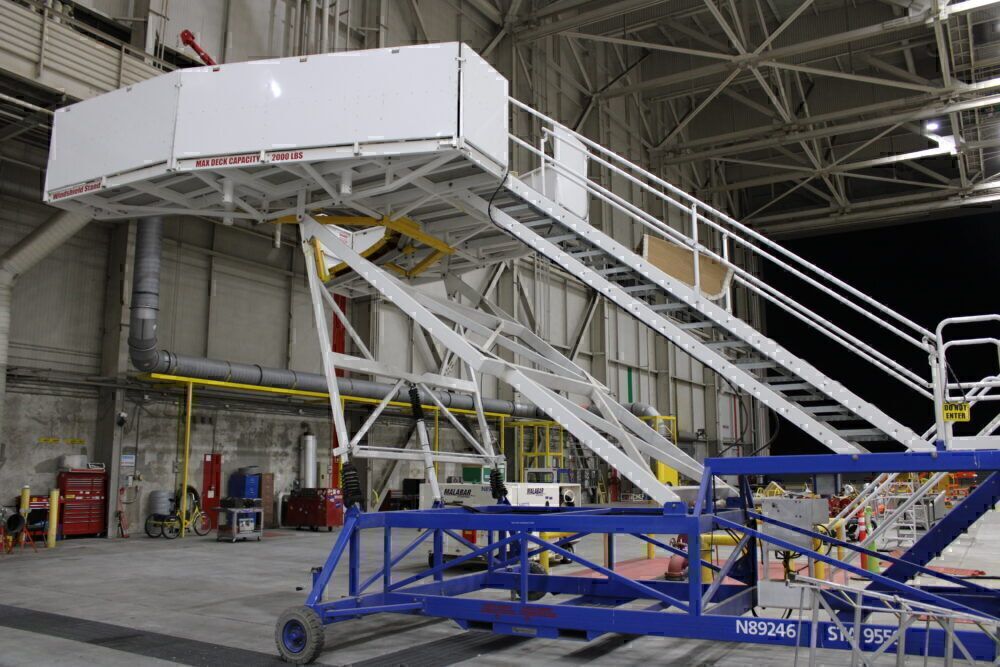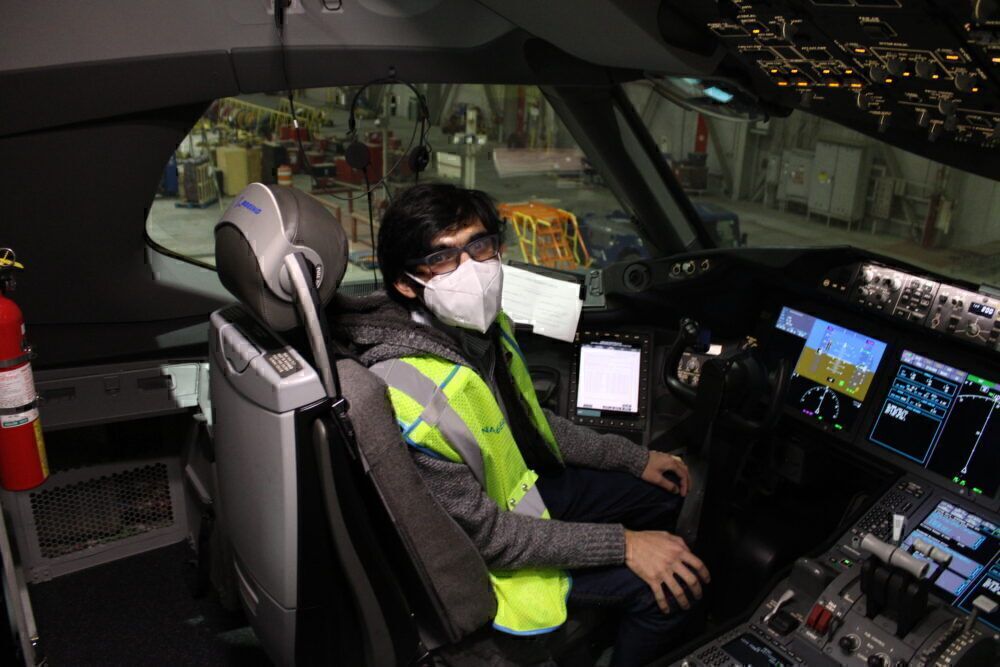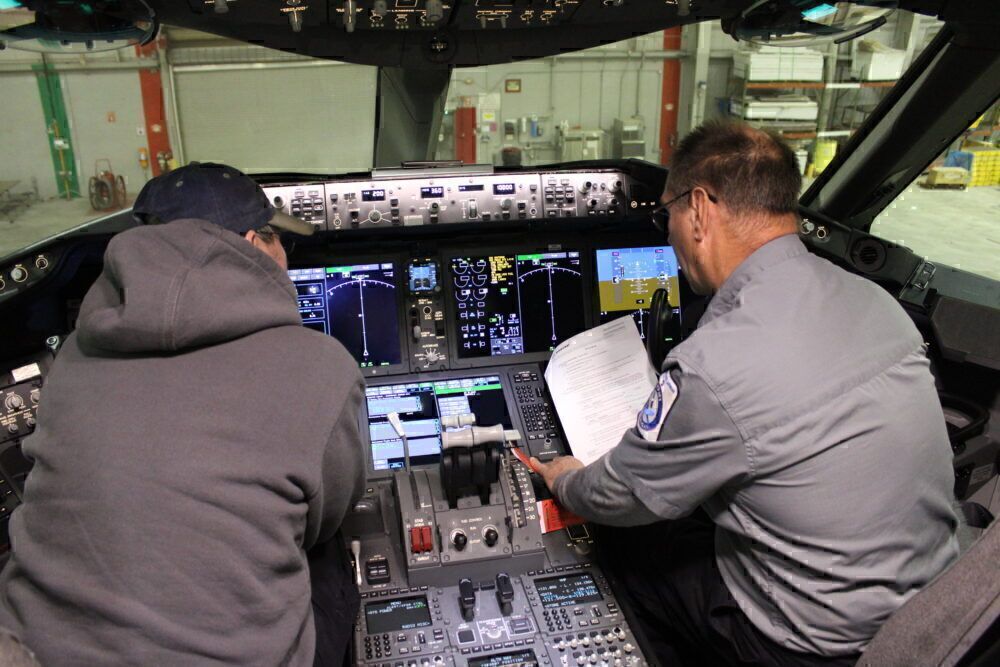Maintaining a Boeing 787 Dreamliner is a lot of work. American Airlines has an expert team of professionals who ensure the safety of each aircraft before flight. Simple Flying had a chance to head behind the scenes at an American Airlines hangar in Dallas/Fort Worth International Airport (DFW) and see what it takes to maintain a Boeing 787 Dreamliner. Here's an inside look.
Simple Flying got a chance to speak with Robert Garcia, a Senior Manager at the DFW Hangar. AA's DFW hangar routinely sees both narrowbody aircraft and widebodies. Most of the planes these days at American's hangar in DFW are Airbus A319s, Boeing 737s, Boeing 787s, and Boeing 777s.
The maintenance itself
The sheer size of a Boeing 787 means there is a lot to work with. Every time a plane comes into the hangar for maintenance, the team knows it has a pre-defined time to conduct the aircraft's full maintenance before it heads back out to join the schedule. However, this does not mean that the team rushes through a check. Instead, the work is already portioned out so that everything that needs to be checked gets checked.
For example, the aircraft Simple Flying got to get up close, and personal with was a Boeing 787-9 Dreamliner that had spent the night before undergoing an A-check. During the A-check, maintenance professionals devote a total of 100 man-hours to working on various parts of the aircraft. This could include engine, wing, gear, and interior work.
While this work is scheduled to give the team enough time to work on their 10-hour schedules, if anything does come up, the team has to weigh the severity of the problem and fix what needs to be fixed before the aircraft goes out to service.
The team does most of its work at night, while DFW is asleep and the planes are scheduled to spend time on the ground. During the week, on average, the team can do about four to five A-checks on Boeing 787s as they come in and out of DFW. This is about 20 per month at the airline's largest hubs.
In addition to the A-checks, the team can also conduct PS-2 checks and Supplemental Tasks (ST) checks, and much more. There are a few things this team does not take care of, such as full repainting of an aircraft or working with composites. For this reason, the team relies on its partners. However, most of the work that needs to be done can be done at the DFW hangar.
The Dreamliner engines
The aircraft had undergone an A-check the night before Simple Flying arrived. However, after the check, the maintenance team noticed that one of the aircraft's engines needed a bit more work. So, the plane spent another day on the ground as the team worked with the engines.
While the engines look pretty big thanks to the cowlings and the large fan blades, the newer generation engines powering the Boeing 787s are efficient, not just in their fuel consumption, but also in their size. Underneath all the cowlings, the components of the engine are relatively small.
Nevertheless, do not underestimate the power these engines bring. While it is comparatively easy for the team to do maintenance on these engines, that does not mean that the engines are not impressive. If you consider some of the routes these planes fly, such as from Los Angeles to Sydney and soon Seattle to Bangalore, the engines' reliability and efficiency are quite awe-inspiring.
The engines also help provide power in the cabin. The aircraft has a battery, but it can get depleted quickly if that runs too long, which can be a very costly replacement. This is why airlines usually hook up to the ground power or run the auxiliary power unit (APU), though running the latter burns fuel.
Replacing the windshield
The distinct Dreamliner nose can be deceiving. In reality, the windshields are massive, and it used to take a lot of time and energy to replace them. To help minimize delays and make it easier for maintenance technicians to do their jobs, American Airlines invested in purchasing a specialized piece of equipment just for this job.
The equipment has a set of stairs that lead up to a deck that fits perfectly around the nose of the plane. Instead of using a lift to replace the windshield, this equipment saves time by fitting nicely along the nose and allows for easy access to replace the windshield.
Windshield replacements can take time, and an airline does not have to do them every time a plane comes into the facility. However, when it does need to be done, this special piece of equipment makes it so much easier to do.
Don't forget that the Dreamliner is a technologically advanced aircraft
If you have ever seen the cockpit of some older generation aircraft, like the Boeing 727, you may expect to see a bunch of dials, gauges, and buttons. On the Boeing 787, all of this is electronic. The cockpit panels are sleek and provide a lot of information, including details for maintenance providers.
On this night, the maintenance team started in the cockpit taking information from the engine that needed another look at. After taking in the problem, the team headed over to open up the engine and solve it.
Mr. Garcia was quick to note that maintenance is not as easy as opening up the cowlings and getting to it. The team has to make sure it is following all safety measures so that the aircraft is not damaged. This means ensuring the flaps and slats are properly stowed and any other maintenance being done will not conflict with the work being done on the engine. Tonight, this was not an issue since the engine was the only thing the team was working on.
Does the novelty ever wear off?
Mr. Garcia was quick to say no. While most of us may not recognize the sheer size of the jet from our view in the terminal or entering the cabin, on the ground, the novelty of this has not worn off in Mr. Garcia's distinguished career.
Running an airline is no easy task. While many of us only interact with the gate agents, flight attendants, and maybe some pilot interaction, without the work of the maintenance team behind the scenes, the airline's operations would grind to a halt.
Simple Flying sends a huge thank you to the entire American Airlines team for allowing us access behind the scenes to check out the work involved. Stay tuned for more from the visit!
Have you ever seen a Boeing 787 Dreamliner up close? Do you have experience working on Boeing 787s? Let us know in the comments!

